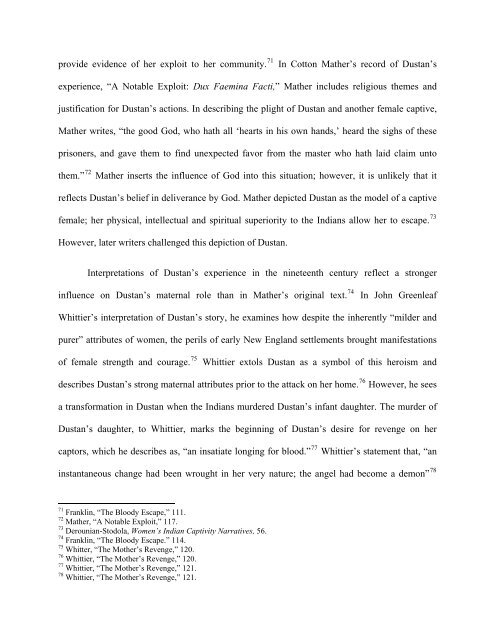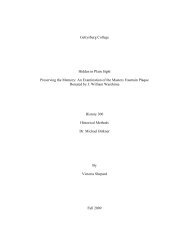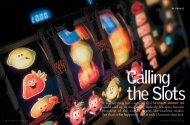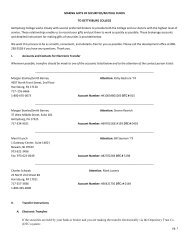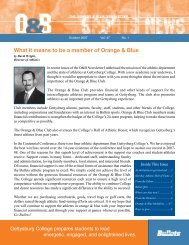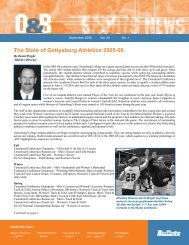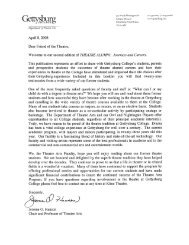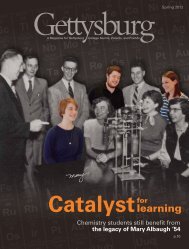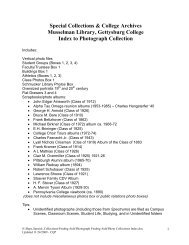Sweet Tooth for Empire: Sugar and the British Atlantic World
Sweet Tooth for Empire: Sugar and the British Atlantic World
Sweet Tooth for Empire: Sugar and the British Atlantic World
Create successful ePaper yourself
Turn your PDF publications into a flip-book with our unique Google optimized e-Paper software.
provide evidence of her exploit to her community. 71 In Cotton Ma<strong>the</strong>r’s record of Dustan’s<br />
experience, “A Notable Exploit: Dux Faemina Facti,” Ma<strong>the</strong>r includes religious <strong>the</strong>mes <strong>and</strong><br />
justification <strong>for</strong> Dustan’s actions. In describing <strong>the</strong> plight of Dustan <strong>and</strong> ano<strong>the</strong>r female captive,<br />
Ma<strong>the</strong>r writes, “<strong>the</strong> good God, who hath all ‘hearts in his own h<strong>and</strong>s,’ heard <strong>the</strong> sighs of <strong>the</strong>se<br />
prisoners, <strong>and</strong> gave <strong>the</strong>m to find unexpected favor from <strong>the</strong> master who hath laid claim unto<br />
<strong>the</strong>m.” 72 Ma<strong>the</strong>r inserts <strong>the</strong> influence of God into this situation; however, it is unlikely that it<br />
reflects Dustan’s belief in deliverance by God. Ma<strong>the</strong>r depicted Dustan as <strong>the</strong> model of a captive<br />
female; her physical, intellectual <strong>and</strong> spiritual superiority to <strong>the</strong> Indians allow her to escape. 73<br />
However, later writers challenged this depiction of Dustan.<br />
Interpretations of Dustan’s experience in <strong>the</strong> nineteenth century reflect a stronger<br />
influence on Dustan’s maternal role than in Ma<strong>the</strong>r’s original text. 74 In John Greenleaf<br />
Whittier’s interpretation of Dustan’s story, he examines how despite <strong>the</strong> inherently “milder <strong>and</strong><br />
purer” attributes of women, <strong>the</strong> perils of early New Engl<strong>and</strong> settlements brought manifestations<br />
of female strength <strong>and</strong> courage. 75 Whittier extols Dustan as a symbol of this heroism <strong>and</strong><br />
describes Dustan’s strong maternal attributes prior to <strong>the</strong> attack on her home. 76 However, he sees<br />
a trans<strong>for</strong>mation in Dustan when <strong>the</strong> Indians murdered Dustan’s infant daughter. The murder of<br />
Dustan’s daughter, to Whittier, marks <strong>the</strong> beginning of Dustan’s desire <strong>for</strong> revenge on her<br />
captors, which he describes as, “an insatiate longing <strong>for</strong> blood.” 77 Whittier’s statement that, “an<br />
instantaneous change had been wrought in her very nature; <strong>the</strong> angel had become a demon” 78<br />
71 Franklin, “The Bloody Escape,” 111.<br />
72 Ma<strong>the</strong>r, “A Notable Exploit,” 117.<br />
73 Derounian-Stodola, Women’s Indian Captivity Narratives, 56.<br />
74 Franklin, “The Bloody Escape.” 114.<br />
75 Whitter, “The Mo<strong>the</strong>r’s Revenge,” 120.<br />
76 Whittier, “The Mo<strong>the</strong>r’s Revenge,” 120.<br />
77 Whittier, “The Mo<strong>the</strong>r’s Revenge,” 121.<br />
78 Whittier, “The Mo<strong>the</strong>r’s Revenge,” 121.


